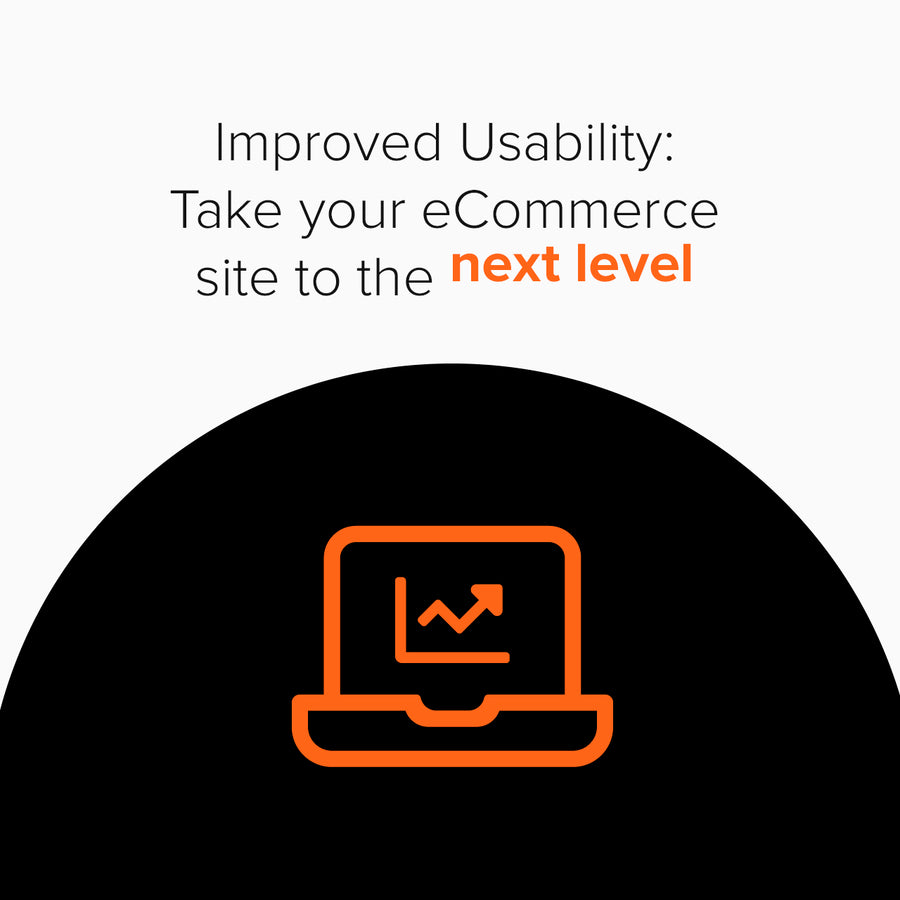
As a support team, we’re often asked for ways to help improve the Magento Admin usability and also for suggestions to help enhance the end user's customer journey, so we thought we would share our thoughts on the subject.
We’ve collated a list of the modules that we have used across numerous sites and seen resulting improvements in usability:
1. Amasty Merchandiser Module:
https://amasty.com/visual-merchandiser-for-magento-2.html
Currently you may be organising your products for each category by ranking them with a sort order of 1-10 for example. With this module, it is more user friendly and allows you to drag and drop the products in an order so you can visually see them before you hit save. There are also built in filters to select to show the products based on best sellers, added most recently and more. You can also easily import products into new or existing categories based on a set of conditions, making the allocation of products much quicker.
2. Google Feed - Xtento Export Module:
https://www.xtento.com/magento-extensions/magento-product-feed-export-module.html
If you have any regular stock or pricing updates into your site and are not already automating them, we’d suggest looking into this - save manual admin time and increase accuracy. Using the Magento Stock Import Module by XTENTO, importing stock and product information from third party systems into Magento is a breeze - and fully automated.
3. Have you thought about an alternative payment provider for your site?
There are a few different providers available to choose from or to look to see if you can add it onto your current payment provider. For example Paypal pay in 3, you may be wanting to offer your customers the option to spread their payments out and as long as your Magento site is running 2.4.3 and above, this can be setup as part of the core features available. You can read more here: https://docs.magento.com/user-guide/payment/paypal-credit.html
There is Amazon pay, you would need an Amazon account set up for this, and a module installed directly from the Magento marketplace but the module is free.
More information here: https://marketplace.magento.com/amzn-amazon-pay-magento-2-module.html https://pay.amazon.co.uk/integ...
We work with a number of preferred payment partners, our primary recommendations at the moment are Adyen: https://www.adyen.com/ for larger clients with a turnover of 3 million plus. They’re a global business and also a registered bank which means they don’t need to rely on external banks to settle payments which makes their platform very quick. This also means they’ve been able to create industry leading risk management to reduce the chances of charge backs to you as the merchant. Out of the box their platform integrates with a number of other payment providers like Apple & Google and they’ve invested heavily in making this process as seamless as possible.
Our other preferred partner is Dutch company Mollie: https://www.mollie.com/uk , they’ve targeted themselves at the smaller SME sector which means they compete with some of the cheaper payment provider such as Opayo and Worldpay but they’ve investment heavily in their integrations and platform meaning they compete with the likes of Stripe and to a smaller extent Adyen. Both of these platforms are easy to integrate with Magento because they have dedicated modules. For merchants wanting additional functionality they have an array of features and settings and both have the capacity to deal with subscriptions and they support delayed payment providers such as Klarna.
Other Providers
Opayo: is a good choice for merchants wanting a solution with proven long-term reliability. Has a good 3rd-party Magento module and issues updates relatively infrequently so stability is good. Stripe: good for merchants interested in alternative payment methods and a modern, frequently updated module. Braintree: similar to Stripe, a relative newcomer to the market, again with a regularly updated module which is even bundled into Adobe Commerce core.
4. Fetchify/Loqate:
Fetchify and Loqate have multiple options to make your customers' user journey easier, and also help you as a business get the correct information from the customer. They provide address autocomplete, postcode validation, email validation, phone validation and more. As well as making life easier for your customers, you could also see fewer incorrectly typed addresses on your orders! You can find more information on pricing and what they offer here: https://fetchify.com/pricing/
5. Lazy Load/Webp:
WEBP is a next-generation file format offering improved compression which means smaller file sizes and quicker download times. Our approach automatically converts images to WEBP format while keeping the JPEG as a fallback for older browsers. It is supported by 93% of browsers as of today. If you have Cloudflare, it provides a feature to convert to WEBP automatically. Otherwise we can help you switch to the newer format on your website.
6. Product Recommendations:
You may have already set up cross sells, upsell, related products via the default way in Magento manually. Have you thought about having something in place that automates this for you based on a set of conditions and attributes creating a smart rule? You can group suggested bundles of items on a page, to prompt customers with items that are frequently bought together too. You can find out more here: https://amasty.com/automatic-related-products-for-magento-2.html
7. Shop the Look:
This might not be something for everyone, but have you wanted something to help sell a complete look to your customers? Whether this is clothing, furniture, a collection etc? There are multiple options available to help customers purchase a complete set of items, reducing the error of mismatching purchases.
Below you can find a few different modules, all that are slightly different:
https://marketplace.magento.co...
https://www.mageants.com/lookbook-extension-for-magento-2.html
https://www.fmeextensions.com/magento-2-lookbook-extension.html
https://store.webkul.com/magento2-lookbook-extension.html
8. Multi Language - Google Translate:
Are you wanting to engage with customers in their native language? With Google Translate you can make your eCommerce store multilingual therefore creating a better user journey for customers who prefer to browse in their native language. This helps deliver a great experience and can help boost your sales.
9. Click and Collect:
Do you have a physical shop or multiple locations? Are you wanting to offer the ability for customers to collect their items directly as opposed to paying for delivery?
With Magento you can integrate a click and collect module into your site, to allow for this and customise it based on your requirements for each store. One of the modules we have used is: https://amasty.com/store-pickup-for-magento-2.html
10. Multi Currency:
If you often trade overseas, have you considered setting up additional currencies for your most popular regions? It doesn’t have to be complicated, since Magento supports a ‘display only’ currency model where the customer is still charged in your local currency (GBP for our audience, most likely!). You can go for translations and region-specific pricing if your business case supports an increased level of effort, which in turn should drive further localised sales. There’s also extras like localised shopping feeds to consider. We build and maintain a lot of multi-currency/localised sites, the cost of setting up might be less than you think.
11. Page Builder Styling/Setup:
Previously limited to the licensed version of Adobe Commerce, Page Builder provides a drag-and-drop system for your content pages (as opposed to category and product pages). If you write a lot of articles for your site - and you should, it’s good SEO and brand-building practice - the Page Builder can make life a lot simpler. It’s a core feature from 2.4.3 upwards, so all we usually need to do is prepare the styling for the content blocks - then away you go!
You can read more about our recent work for Fired Earth here: https://www.absolute-design.co.uk/services/magento-ecommerce/two-iconic-brands-come-together
12. Amasty Layered Navigation:
Every good ecommerce store needs a filtering system, especially those with larger catalogues. Adobe Commerce of course has one out-of-the box, but it’s a little limited in nature. If your products would benefit from an easier way to browse, such as selecting multiple filters within the same ‘group’ (e.g. several colours at once), or slider-based filters, there are modules to achieve this. It’s also quite common for retailers to have very specific colour names (eggshell pink, anyone?) for each product, which doesn’t really filter very well - some of the modules in question will help you group colours (or other attributes) together to provide much more meaningful options for customers.
13. Improved Search:
External search providers are becoming a big thing within the industry and while not everyone is 100% on exactly how they work, there is no denying they’re here to stay. We’ve worked with a number of these microservices, such as Algolia: https://www.algolia.com/ Nosto: https://www.nosto.com/ and Salesfire: https://www.salesfire.co.uk/ - the latter two being recommendation platforms that provide this functionality as part of their suite of features.
At the highest level, these search providers try to be more intelligent with how your search results return, by harvesting data to make the results more relevant,
Sales fire offers a ‘visually similar’ search option which is great for industries like online art galleries and fashion where people might like to look at products which have a similar colour or design element.
There are also some dedicated visual search platforms out there such as: https://www.syte.ai/ and: https://www.visii.com/ as it’s becoming ever more relevant as Google has already invested heavily in its google image search. These platforms aren’t for everyone but for the right business, they can make the customer journey that bit more frictionless and fun to navigate.
Performance is sometimes an afterthought, but for sites with big product catalogues search can be slow, so outsourcing the heavy lifting to someone like Alogia can make your site lighting fast and it means you don’t have to spend time and money trying to get relevant search results with much more basic systems.
Whether you are an existing M2 user that wants to improve site performance via our support service, or you want to launch a new eCommerce site to take advantage of the shift of consumer buying behaviour, please get in touch with us today and we can start the conversation about how Absolute can help improve your eCommerce offering.
Contact Us to discuss how we can help increase sales and boost your online performance!
INSIGHTS
20 February 2025
100% Client Coverage for Urgent Adobe Security Patch APSB25-08 - February 2025
CASE STUDIES

Electrical Counter
Discover how we optimized Electrical Counter’s Adobe Commerce Cloud migration with a seamless Equinox ERP integration, 100K+ SEO-friendly redirects, and bespoke functionality for automation, pricing, and performance.
-
Magento

Floor Giants
Discover how Absolute helped Floor Giants boost customer engagement and streamline their Magento store. Learn about the key features that made the difference.
-
Magento

Packaging Environmental
An Adobe Commerce Cloud site delivering an enhanced B2B customer experience, bespoke features to fulfil unique business logic and improved GDPR compliance.
-
Magento

Packaging Environmental Sage X3 Integration
Having been purchased by Bunzl UK Ltd, Packaging Environmental needed to move their ERP system from Sage 200 to Sage X3.
-
Magento

Leading Jewellery Brand
Multi-store Adobe Commerce Migration.
-
Magento
Are you excited to get your next project up and running? Or are you unsure what is dragging you down?








